Part Three: Flying Saucers
This is part three of a three part series on celestial events. You can read part one, here, and part two, here.
Looking to the night sky – with questions, for answers, in wonder – is something all humans do. While the moon and the stars have offered humans knowledge and mystery for millennia, we have often interpreted unexpected light and movement in the sky within the context of bigger changes underway on earth.
Imagine a “flying saucer.”
Did you think of something that evokes more than 80 years of popular culture about alien visitors to Earth, or did you think of someone throwing a tea set at you? Today, the “flying saucer" is synonymous with unidentified flying objects or UFOs, a connection that traces its origin to the skies over Washington State in 1947.
Discs & Saucers
On June 24th, 1947, Kenneth Arnold, a businessman from Idaho, was flying his private plane over Tahoma/Mt. Rainier when he saw nine shiny discs that were “flat like a pie pan” moving rapidly through the skies. These discs spotted south of Seattle occurred nearly two weeks before the crash of the now famous “flying disc” or weather balloon in Roswell, New Mexico. A few days after Arnold’s sighting, a journalist described his encounter as being with “flying saucers.” The term was adopted by newspapers around the world who were soon inundated with stories about mysterious shiny objects travelling through the sky.
The “modern age” of UFOs had begun.
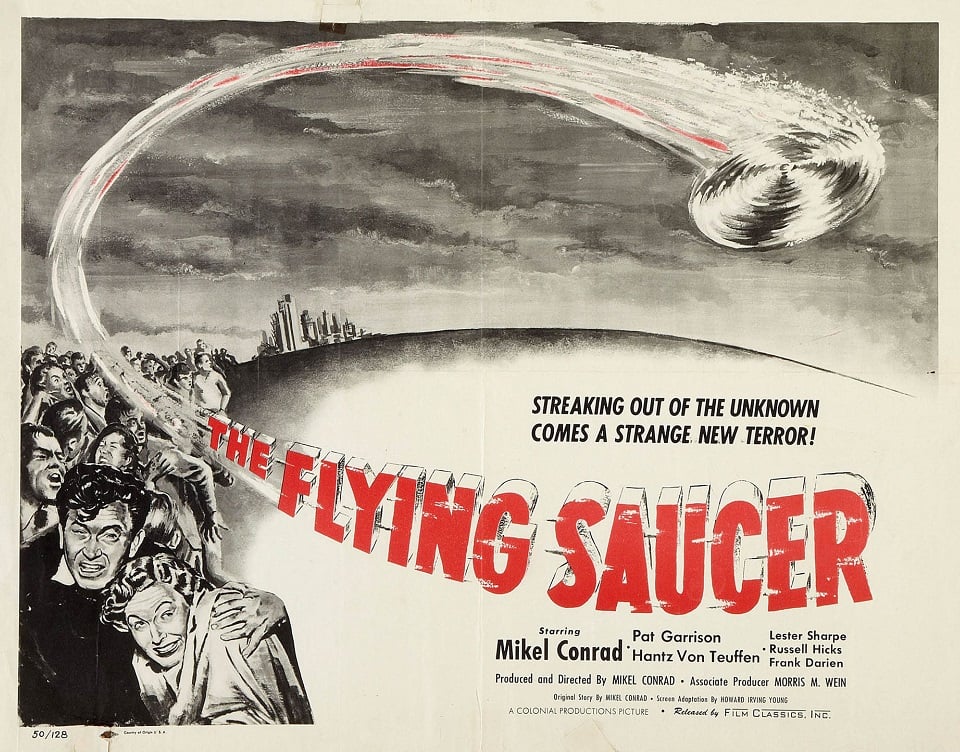
Flying Saucers on Vancouver Island
Victoria’s Daily Times and Daily Colonist newspapers reported several eyewitness accounts of flying saucers over Vancouver Island in July 1947. As with airship sightings through 1896-97, newspapers described the events with a mixture of curiosity, skepticism, and mockery. One key difference from reporting in the 1890s is that many witnesses were listed as veterans of the Second World War. This may have lent a sense of integrity to their accounts, though in the case of Arthur Morfett, “...an R.C.A.F veteran now employed as an investigator with the Wartime Prices and Trade Board”, the Daily Colonist for July 8th noted that the saucer he claimed to have found resembled little more than the rusty top from a can of vegetables. Former soldiers also had the potential to either support or challenge speculation about a connection between flying saucers and new military technology.
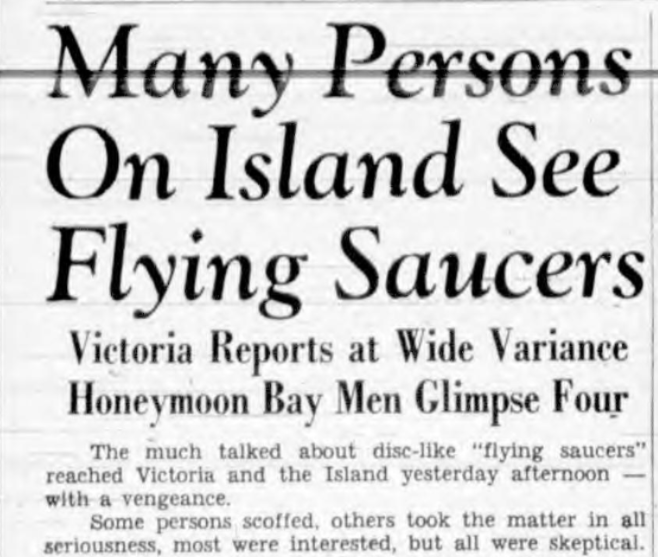
The Colonist was less dismissive of a report called into the Provincial Police from loggers in the rural community of Honeymoon Bay:
Four mysterious flying discs were seen over Honeymoon Bay, Cowichan Lake, at 6:20pm yesterday by two employees of Western Forest Industries Ltd., according to a report received by Duncan detachment of the Provincial Police from Constable Andrew Grant …They were travelling at a high rate of speed in a westerly direction , and shone brilliantly in the sun.
Constable Grant was informed by the two witnesses that the discs appeared to be in formation, dipping and swaying as they soared through the clear sky. The two men said each disc seemed to be as big as a house.
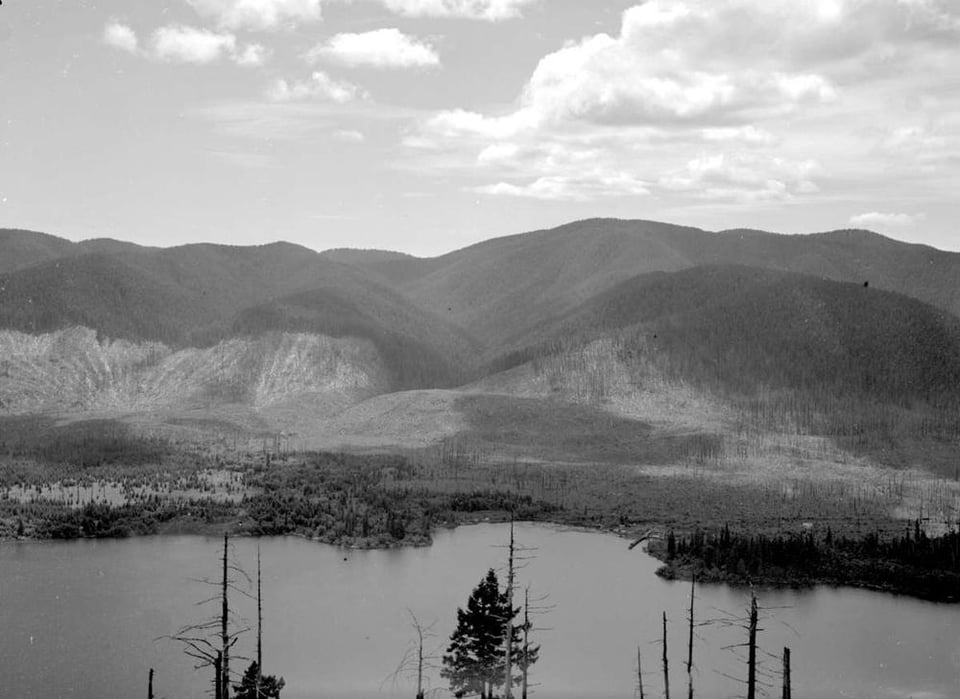
That the Honeymoon Bay witnesses reported to the police and not the media is an interesting anomaly to UFO reports in Canada during the 1940s. In his PhD dissertation, “A History of Canada’s UFO Investigation, 1950-1995”, historian Matthew Hayes notes that, with just a handful of exceptions through the 1940s and 1950s, it was not until the 1960s that witnesses began reporting UFOs directly to the Canadian government. According to Hayes, the people making these reports were usually deemed to be reliable by government officials. It was the quality of their observations – not their character – that officials questioned.
Shiny Geese or Something in the Eye?
The flying saucers from July 1947 were variously described by witnesses (e.g.: as big as a house, as big as a silver dollar, etc.), though all seem to share the details of the objects moving at high speed and being shiny or silver in appearance. Newspapers reported what people saw, but they also offered possible explanations – from shiny Canada goose wings to “flitting flies in the vitreous humor of the eye.”
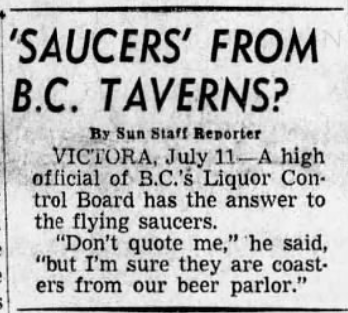
Whatever the explanation, the Vancouver Sun did not want to miss an opportunity to gain new readers. The paper staged a publicity stunt and dropped thousands of paper pie plates from the newspaper’s airplane; finders returned plates to the Sun for cash prizes.
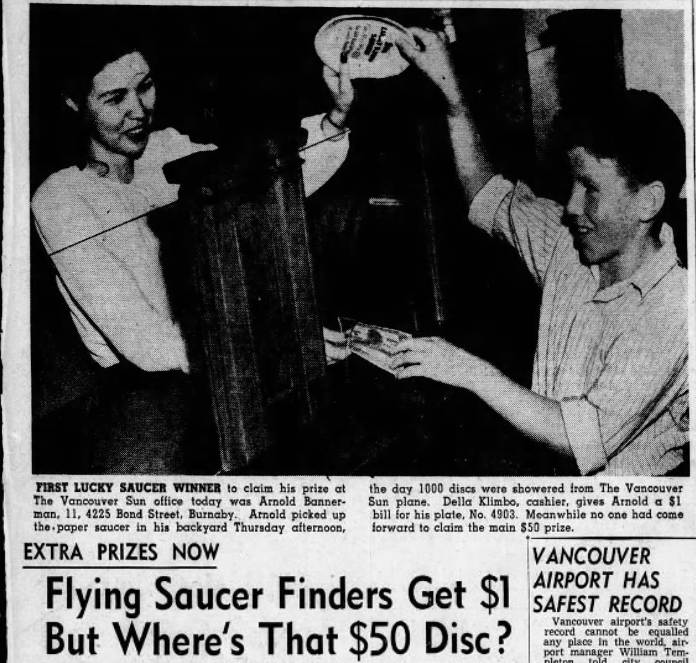
The Truth…Is It Out There?
Canadians continue to report between 600 and 1000 UFOs – now called unidentified aerial phenomena (UAPs) – each year. In July 2025, the Office of the Chief Science Advisor of Canada (OCSA) issued a report addressing the current practices surrounding public reporting and investigation of UAPs. The report makes several recommendations for increased transparency, communication, and research.
Historian Alexander C.T. Geppert argues that UFOs have maintained an “unbroken persistence as a contested, cultural phenomenon” since 1947 and therefore deserve more serious engagement from academic historians.
Some of the Vancouver Island witnesses identified by the newspapers were children and may be alive today. Did any of the witnesses recall the “flying saucers” later in life, or did they come to believe, as the Daily Colonist suggested at the time, that it was all “some evidence of the nervous tension under which the world exists today”?
During the summer of 1947, “flying saucers” captured the imagination of people around the world. “UFOs and the fate of our planet have always been intertwined, because UFOs seem to show up when we’re dealing with intractable global problems,” explains Matthew Hayes. “They tantalize us with the prospect of technology that might save us, the same way people might look to tech moguls in Silicon Valley.”
Whether it was aliens, geese, or a military experiment, the spectacle of an unknown technology travelling the planet fed into feelings of anxiety as humans entered the atomic age. It may be that the truth about flying saucers is “out there” – or perhaps there is an explanation to be found much closer to home.
If you enjoyed this three part series please let me know, and consider sharing the newsletter with a friend!
In 1979, the BC current events show Webster! interviewed American Daniel W. Fry who claimed he encountered a flying saucer and its occupants in New Mexico in 1950. Thanks to the BC Archives, you can watch the interview below.
https://www.youtube.com/embed/X6-OrE4bhhY?si=TJr6NwiS2Nki-K69&start=3352